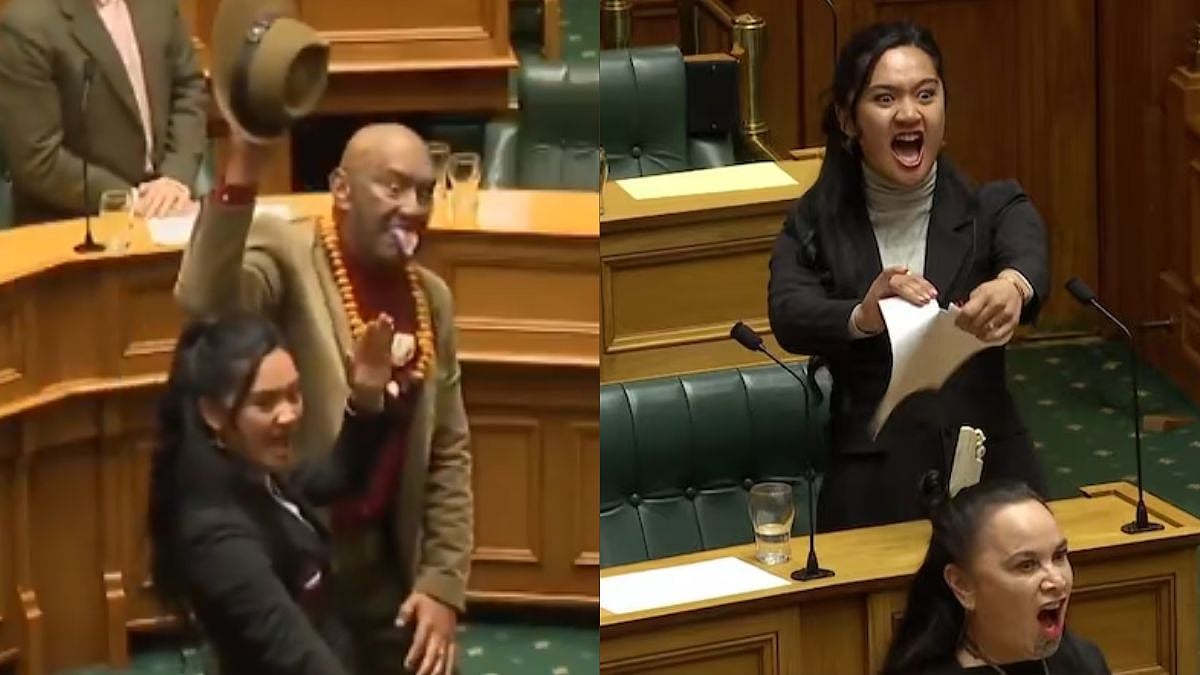As the British was leaving India, Ayodhya was fighting its own fight. Two major sects of India were divided on a piece of land. The nation was struggling with its ideology to be called Indian. The government had to restore the cultural, spiritual and financial roots of the nation apart from providing food and shelter to the common man.
In 1529, Mir Baqi built Babri Masjid in Ayodhya, where Lord Ram was born. Akbar, Babur's grandson, built Ram Chabutara a few years later beside the disputed land, and set an example of the Mughal emperor’s efforts to restore peace.
The freedom struggle played a key role in communal wars and vice versa. The dispute gained momentum and both the sects were not ready to let go of the disputed land. On the night of December 22-23, 1949, a group of five Hindus entered the premises of the mosque and placed the idols of Ram and Sita inside it.
Now was the time when the first prime minister of India, Jawaharlal Nehru, had to react to the question of faith and represent the ideology of the nation. It was the time to send clear signals to the citizens that they were in well constituted hands.
This was the year right after Mahatma Gandhi’s assassination. Nehru was utterly disturbed by the political turmoil. He had said to Govind Ballabh Pant, the then Chief Minister of Uttar Pradesh, “Indeed, UP is becoming a foreign land to me. I do not fit there. The UP Congress, with which I have been associated for 35 years, now functions in a manner that amazes me.” He cited a biblical metaphor while addressing his party: “If the sea loses its saltiness, wherewith shall it be salted” referring to the ideals of Congress that were no more valuable for the state. Nehru wanted the District Magistrate K K Nayar to remove the idols from the mosque premises. He stated that he could not. Apparently, the gates of Babri Masjid were locked to prohibit public entry and a priest was allowed to worship the idols once a year.
The Rajiv Gandhi government in 1986 threw open the gates of the mosque for the Hindus to worship inside. He also laid the stone for Ram Mandir with a vision to bring back Ram Rajya. This cost him the elections and the Congress lost for the first time.
V P Singh was the new face from Janata Dal in 1989, although just for a year. He took a political stand on the question of Ram Mandir, “So far as it violated or intended to violate the Supreme Court's order, I was against it. So far as it meant to build a Ram temple in Ayodhya, I was in favour of it.” Notably, V P Singh had implemented Mandal Commission’s recommendation to reserve government jobs for people from lower caste background.
In 1990, BJP carried out a rath yatra lead by Lal Krishna Advani, president of BJP, to build the Ram Mandir. Advani exclaimed “Mandir wahi banayenge” whereas V P Singh wanted the Babri Masjid to remain where it was and had stopped the rath yatra from entering the state with the help of Lalu Prasad Yadav, then chief minister of Bihar. A question that Singh asked in the Parliament, “What kind of India do you intend to create?”, which does not have an answer till date.
On December 6, 1992, lakhs of kar sevaks, sages and Hindu followers reached Babri Masjid and demolished the structure. Lathi charge, tear gas and bullets, all were at the discretion of the police and a number of people were killed.
Then Prime Minister P V Narasimha Rao did not impose the President’s rule in Uttar Pradesh and got his image tainted for ever. In his book Ayodhya: 6 December 1992 which he had requested to be published posthumously, he has attached his speech he delivered in the Parliament on December 7: “The demolition of the mosque was a barbarous act. The government will see to it that it is rebuilt.” Calling the site a mosque was the blunder that set the nation on fire and the riots in Mumbai followed.
The first prime minister of BJP, Atal Bihari Vajpayee, said before resigning from the 13-day government on May 27, 1996, “We yearn for the unity of the nation. Revoking Article 370 and building Ram Mandir in Ayodhya are the key actions to be taken.” His careful remarks like “Mandir banane gaye the, ya masjid todne gaye the” and “Nukile patthar hain zameen samtal karni padegi” pivoted party activities in 1992 also.
A major decision from Allahabad High Court came in 2010 when Manmohan Singh became prime minister. The court had ruled that there be a three-way division of the disputed land – one-third for the Sunni Waqf Board, one-third for the Nirmohi Akhara and one-third to the party for Ram Lalla. He had issued an appeal stating “Government on its part remains fully committed to upholding the rule of law and maintaining peace, order and harmony…Orders delivered by the three Honourable Judges need to be examined carefully. The correct conclusion, at this stage, is that the status quo will be maintained until the cases are taken up by the Supreme Court.”
Prime Minister Narendra Modi tweeted, “Be it Ram Bhakti or Rahim Bhakti (devotion to Ram or Rahim), it is imperative that we strengthen the spirit of rashtra bhakti (devotion to the country),” soon after the Ayodhya verdict last week.
Showing his mettle in last five years, he has handled difficult matters with thoughtfulness and farsightedness. His administration has maintained peace after Triple Talaq case, revoking of Article 370 and Ayodhya verdict.
India’s prime ministers have played their role in making Ayodhya, Ayodhya. History is still in the making.
The writer is an educationist. Views are personal.


.jpg)








